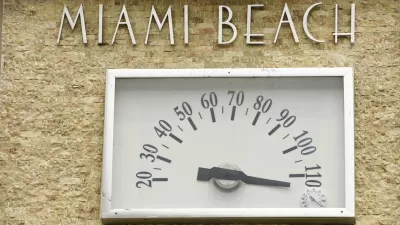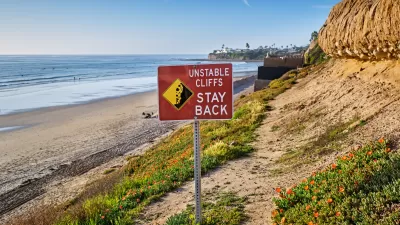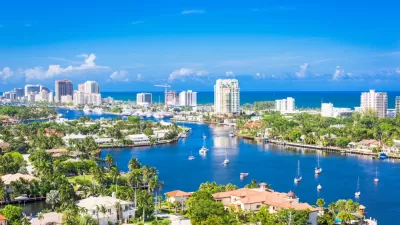How did the seven square mile, four-foot high barrier island in the Atlantic Ocean off Miami and Biscayne Bay hold-up to Hurricane Irma? The city arguably has done more to adapt to sea level rise in recent times than any other coastal city.

A post on September 14, largely written prior to Irma's first landfall on Sept. 10 on Cudjoe Key, part of the barrier reef islands known as the Florida Keys, and second landfall later that day on Marco Island, also a barrier island, in the Gulf of Mexico in southwest Florida, strongly suggested that barrier islands were best left undeveloped:
Barrier islands serve a critically important ecological purpose by preventing ocean swells and other storm events from disrupting water systems on their mainland sides, protecting the coastline.
"As the first line of defense during storms that threaten coastal communities, barrier islands are very important for reducing the devastating effects of wind and waves and for absorbing storm energy," according to the National Oceanic and Atmospheric Administration (NOAA) of the U.S. Department of Commerce.
Miami Beach dodged a bullet, or in the words of Mayor Phillip Levine on CNN on Sept. 11, "dodged a cannon," when Hurricane Irma veered westward, sparing southeast Florida a direct hit as had initially been forecasted on Sept. 8, it still endured flooding along with much of Miami-Dade County.
As initially posted, Miami Beach has been preparing for sea level rise, flooding, and storm surge for several years.
After he took office, in November of 2013, Levine fast-tracked a program to install electric pumps along Alton Road and other prime flooding spots on the city’s west side so that, during a storm surge or high tide, the pumps can be switched on, suctioning water off the streets and out into Biscayne Bay
In a conversation with CNN's Wolf Blitzer on Sept. 11, he tells how the adaptations fared:
And what we found is that during this historic high tide that we experienced with this tidal surge, all those areas that we improved were absolutely dry.
So for us, we are very excited. It was a success. But once again, you never declare victory against mother nature.
Levine adds that he believes Miami Beach is "a model for other cities" and serves as a reminder that investment is needed "in coastal cities to make them resilient because these weather events...are the new normal."
FULL STORY: Miami Beach: Model for Coastal Cities Adapting to Climate Change?

Alabama: Trump Terminates Settlements for Black Communities Harmed By Raw Sewage
Trump deemed the landmark civil rights agreement “illegal DEI and environmental justice policy.”

Study: Maui’s Plan to Convert Vacation Rentals to Long-Term Housing Could Cause Nearly $1 Billion Economic Loss
The plan would reduce visitor accommodation by 25% resulting in 1,900 jobs lost.

Planetizen Federal Action Tracker
A weekly monitor of how Trump’s orders and actions are impacting planners and planning in America.

Wind Energy on the Rise Despite Federal Policy Reversal
The Trump administration is revoking federal support for renewable energy, but demand for new projects continues unabated.

Passengers Flock to Caltrain After Electrification
The new electric trains are running faster and more reliably, leading to strong ridership growth on the Bay Area rail system.

Texas Churches Rally Behind ‘Yes in God’s Back Yard’ Legislation
Religious leaders want the state to reduce zoning regulations to streamline leasing church-owned land to housing developers.
Urban Design for Planners 1: Software Tools
This six-course series explores essential urban design concepts using open source software and equips planners with the tools they need to participate fully in the urban design process.
Planning for Universal Design
Learn the tools for implementing Universal Design in planning regulations.
Caltrans
Smith Gee Studio
Institute for Housing and Urban Development Studies (IHS)
City of Grandview
Harvard GSD Executive Education
Toledo-Lucas County Plan Commissions
Salt Lake City
NYU Wagner Graduate School of Public Service





























